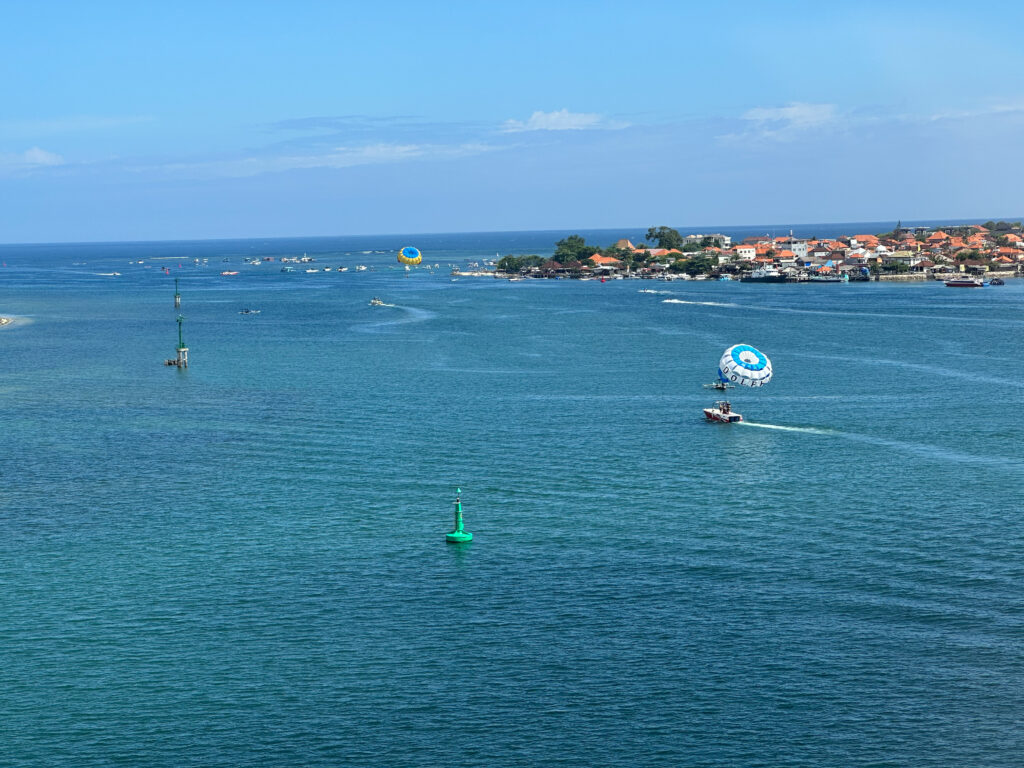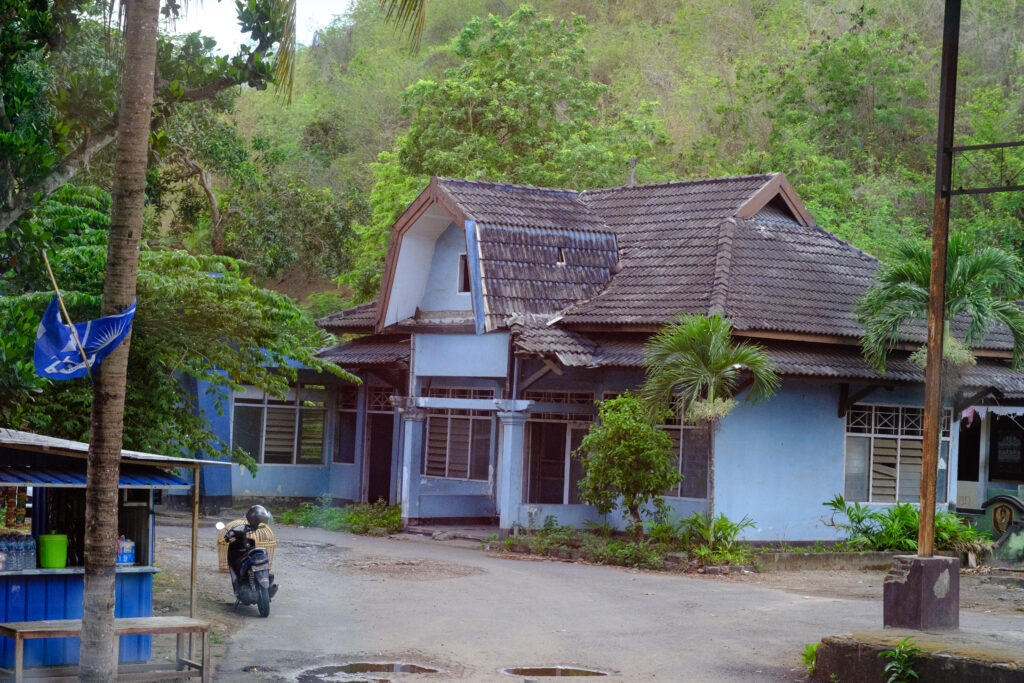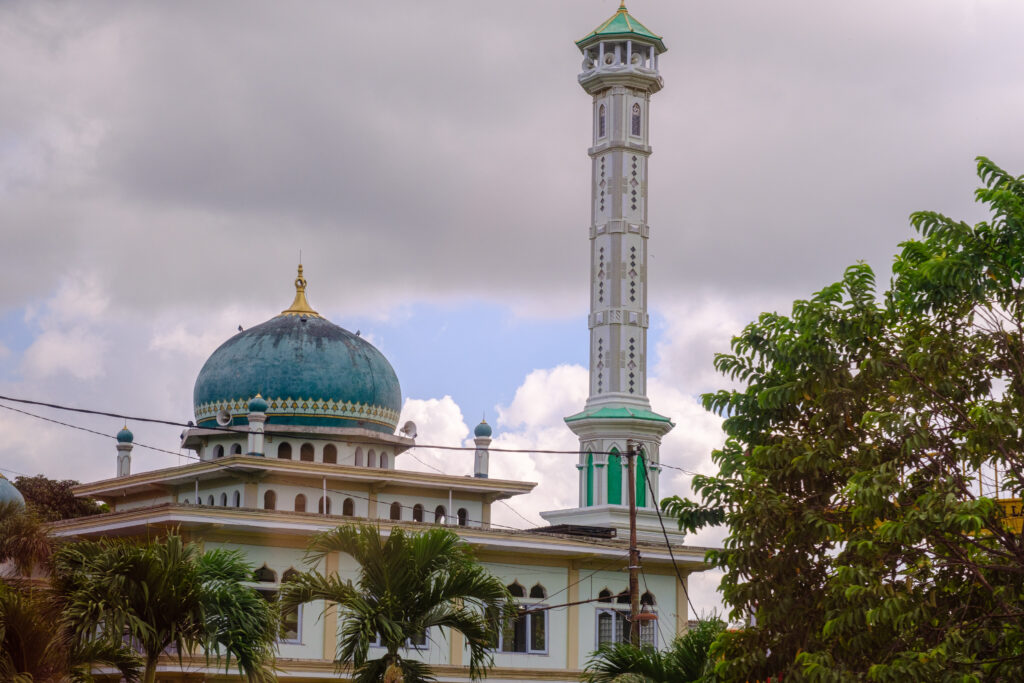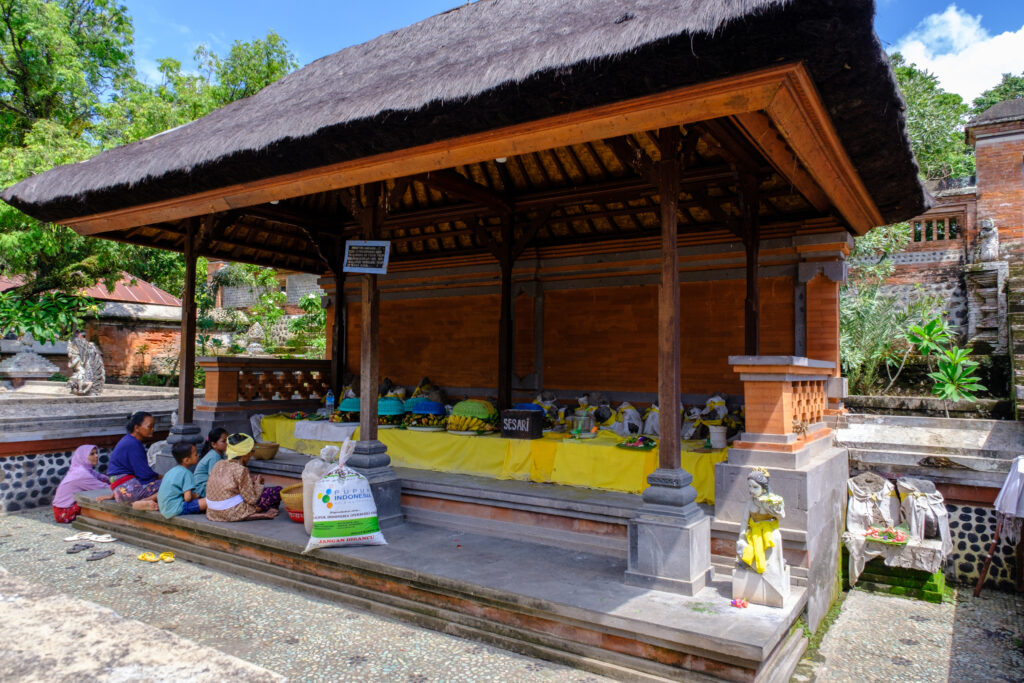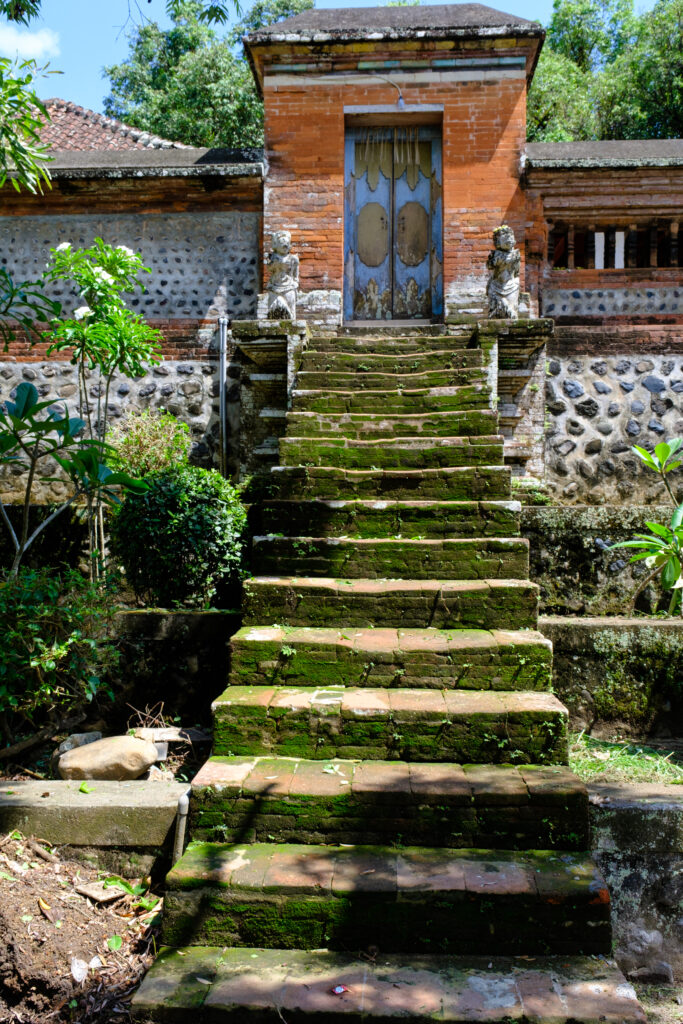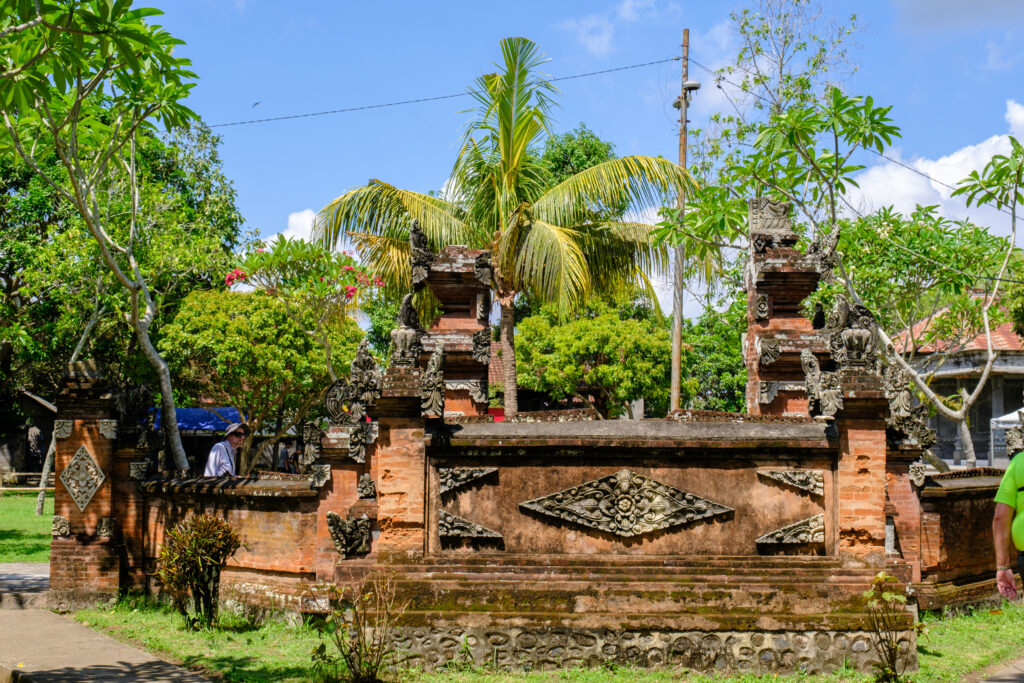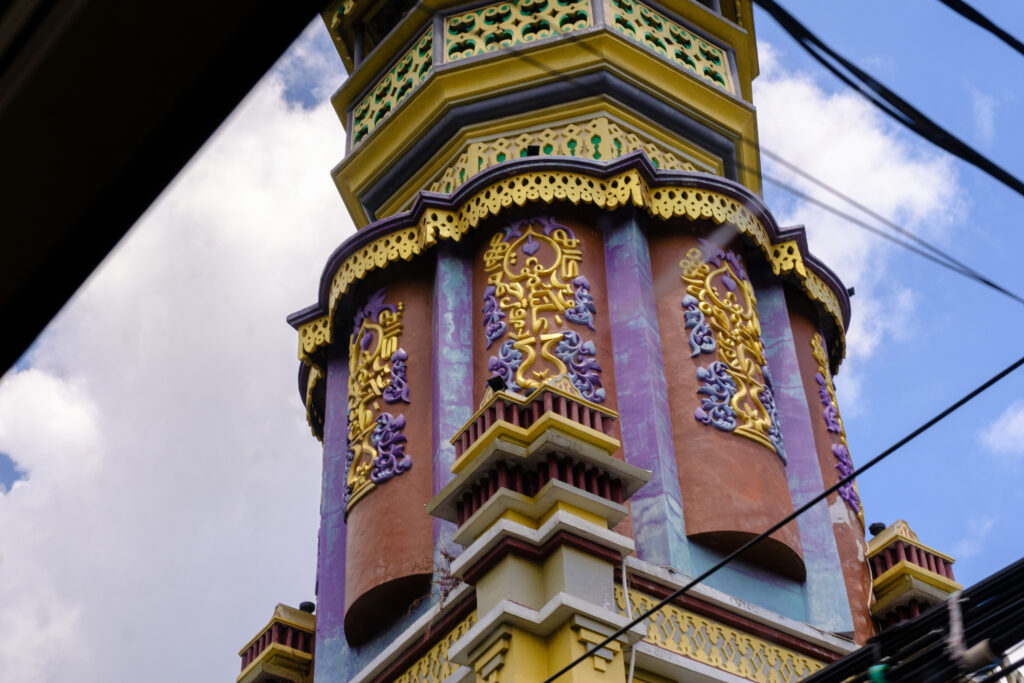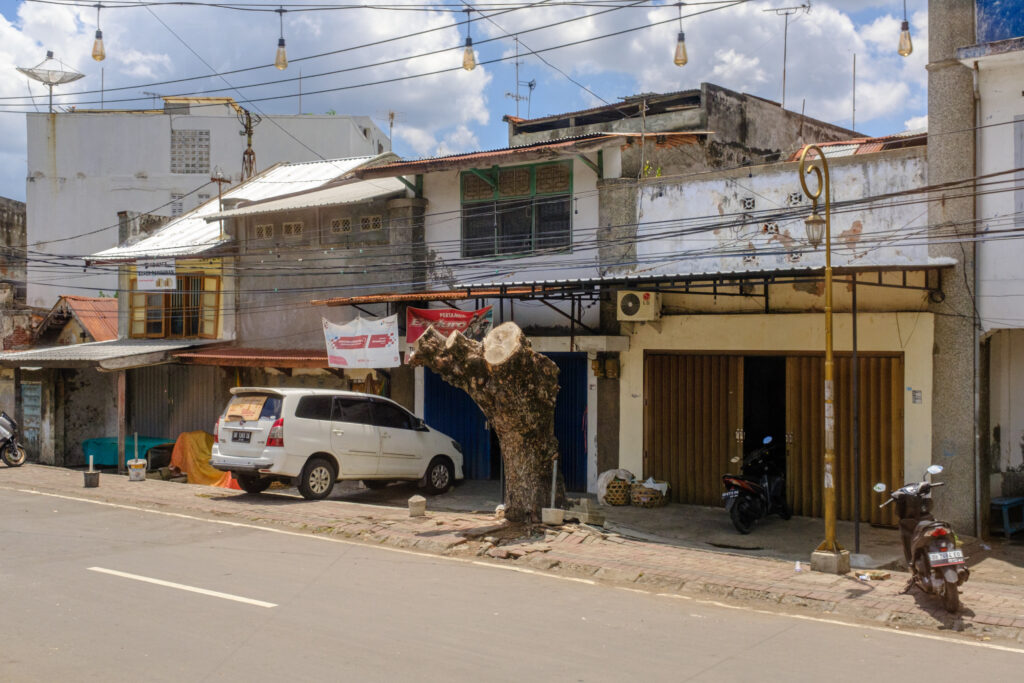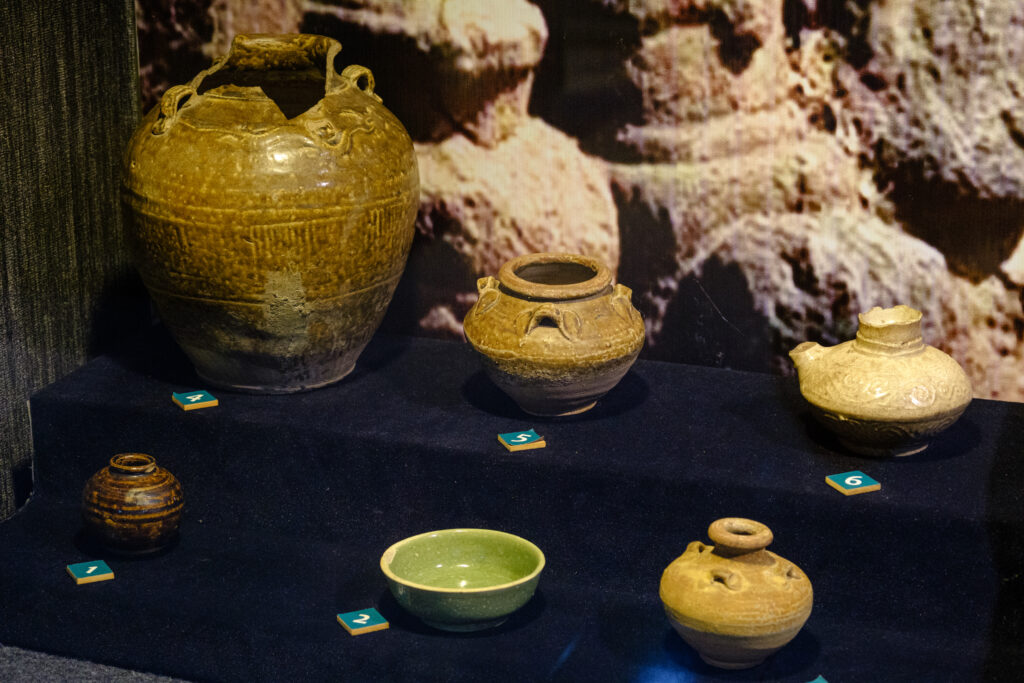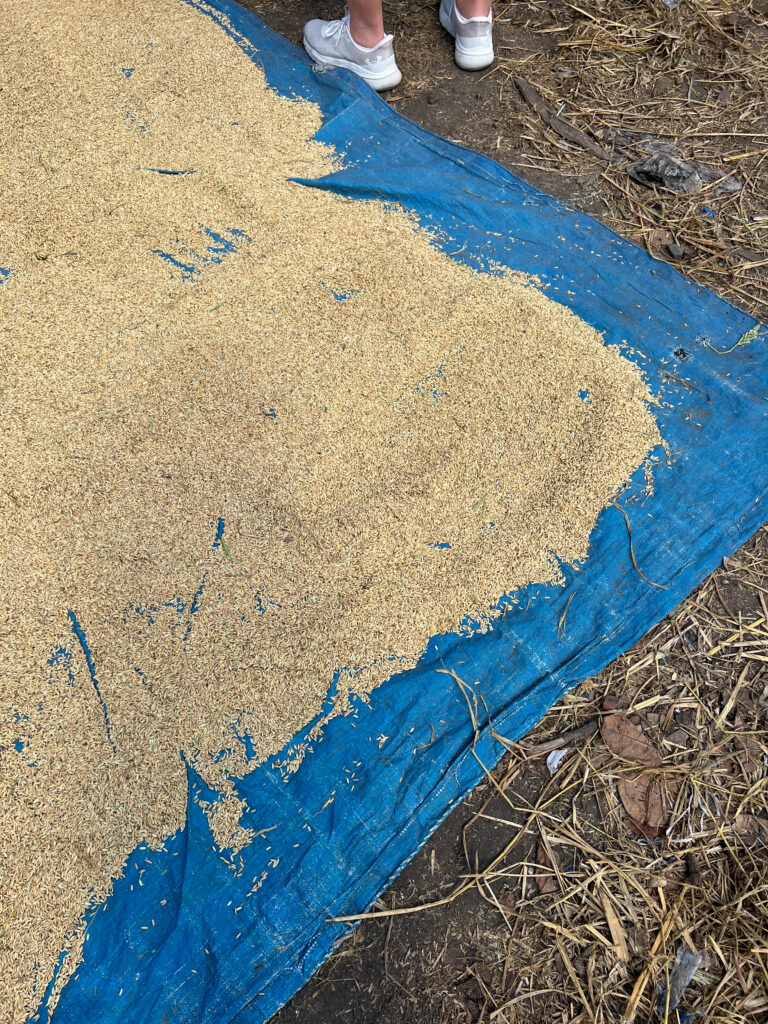Lombok, I think, is jealous of its neighbor, Bali. Bali has the international name recognition. Bali gets all the tourists. Bali earns 80% of its income from tourism. Lombok gets 70% of its income from agriculture and most agriculture is done with manual labor. The last cruise boat to come to Lombok was last May. Guess which brings in more money: tourism or agriculture.
Today, Judy and I divided to conquer Lombok. She went to a pottery demonstration and a wood carving demonstration. I went to a temple, the same wood carving demo, a pearl store and a museum of Lombok history. I suspect that’s the best tourism opportunities Lombok has to offer. No sandy beaches, no swimming pools in tropical settings. No Marriott Luxury Edition hotels. That’s what Lombok needs to compete with Bali.
We saw several musical groups performing traditional Indonesian songs on traditional instruments. One instrument performed the melody. The other six or more percussionists provided rhythmic accompaniment. There was also a sword fighting demonstration, deriving from war ceremonies and now a sport. These groups only perform when there are tourists or visiting dignitaries are in town.
Again today, considerable bus riding was required. It’s not that the distances are so great – probably less than 20 miles. It’s that traffic moves at such a slow pace. Roads are OK but traffic, a mixture of motor scooters, cars and trucks – is snarled. Motor scooters seemed more prevalent here than on Bali, maybe indicative of the relative economic condition between the two.
For us, the most interesting part of today’s touring was not the attractions but seeing how people work and live, as best as can be seen from a tour bus. I while away the hours on the bus taking pictures of people, shops and houses. You can suffer through today’ s shots to see what I mean.
One thing that you see here and a lot of other developing nations is a plethora of small food stands and kiosks, often selling just a few items. It’s never clear to me how the people sitting in their stalls can ever make a living. There are so many of them and so few customers. I don’t get it. Then again, I never walk through a shopping mall back home without wondering how all those shoe stores can ever stay in business. How many shoe stores does the world need?
On the other hand, there were several new housing developments that we saw going up on our way back to the ship. Our guide said that the average 20-year mortgage would run 1,000,000 rupiah per month, equivalent to about $600. That’s a lot in this economy.
The temple that I visited was built in 1744 as a Hindu temple. Today, it welcomes worshipers from all faiths, including Hindus, Muslims, Buddhists and Christians. Indonesians pride themselves in their religious tolerance.
We attended a history lecture this evening about the spread of Islam throughout Southeast Asia and Indonesia in particular. Islam came to this region through the activities of Arabian and Persian traders, people interested in economic gain rather than religious evangelism. They allowed Islam to accommodate local religious beliefs, be it Hindu or even animistic religions. And Islam has never been adopted as a state religion. Indonesian law is not based on Sharia law. Religious tolerance results from the separation of church and state.
Tomorrow it’s off to see the Komodo Dragons.

